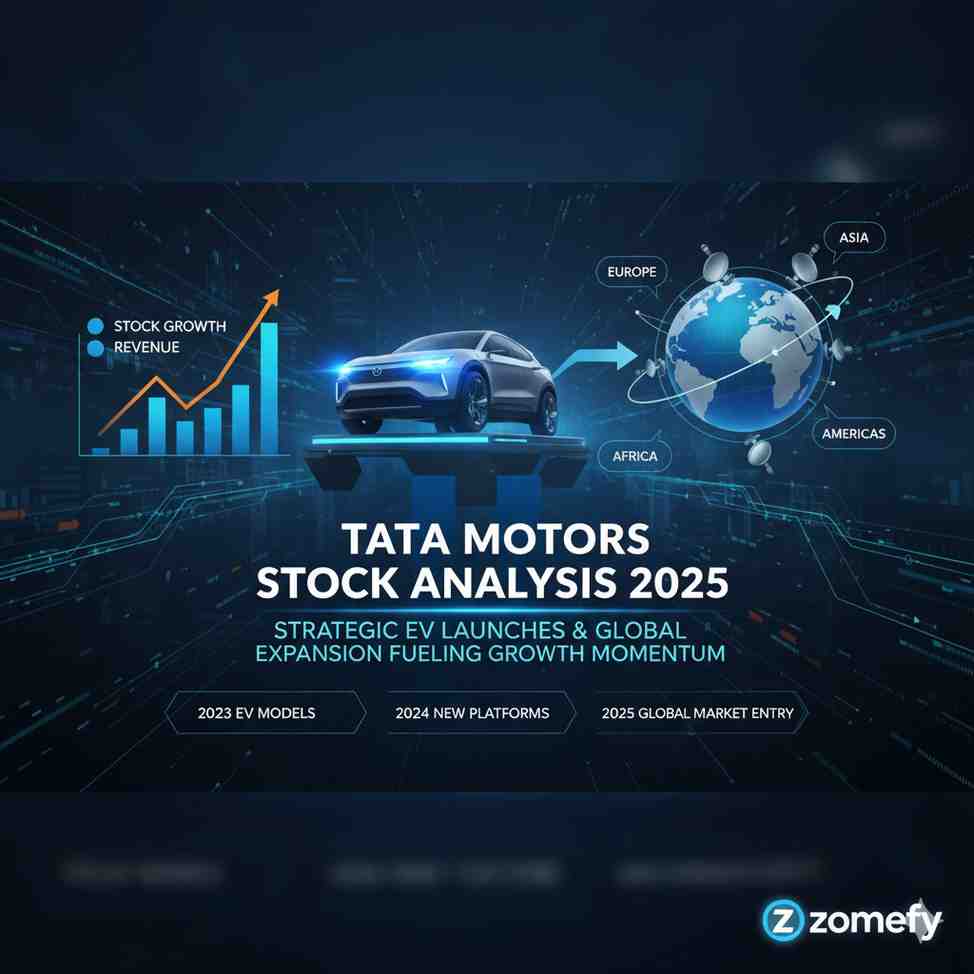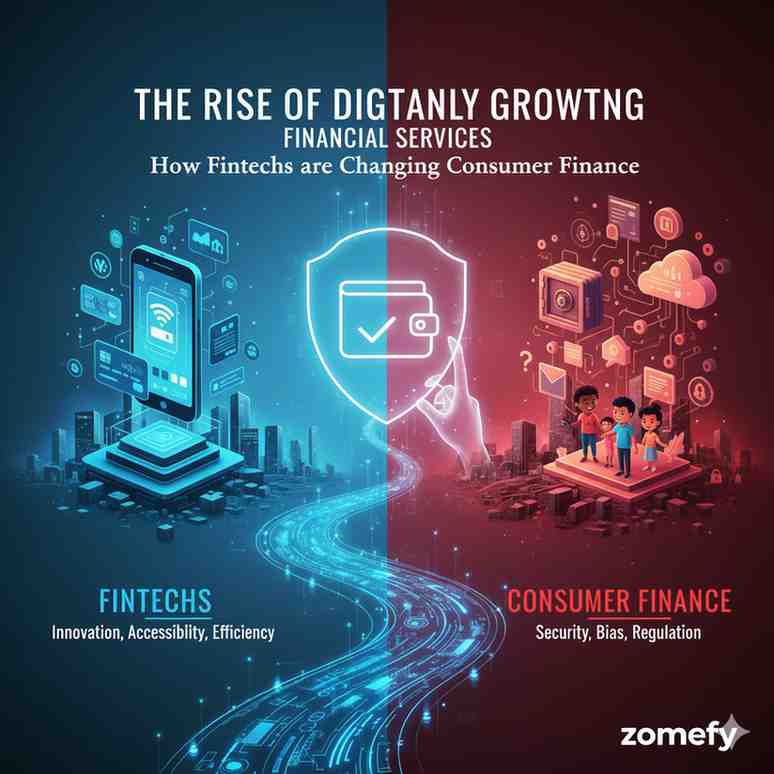From Blackouts to Breakthroughs: How India’s AI-Driven Energy Crunch Is Reshaping Power Investments in 2025
India’s energy sector is undergoing a transformative phase in 2025, driven by the twin forces of an escalating energy crunch and innovative artificial intelligence (AI) applications.
From Blackouts to Breakthroughs: How India’s AI-Driven Energy Crunch Is Reshaping Power Investments in 2025
What You Can Do Next
- Read the full article for complete insights
- Save for later reference
- Share with others learning about this topic
Image not available
India’s energy sector is undergoing a transformative phase in 2025, driven by the twin forces of an escalating energy crunch and innovative artificial intelligence (AI) applications. Historically plagued by power blackouts and grid instability, India is now leveraging AI-driven technologies to optimize energy production, distribution, and consumption, marking a paradigm shift in how power investments are viewed and executed. With an installed capacity surpassing 442 GW and ambitious government targets to exceed 500 GW of non-fossil fuel capacity by 2031-32, AI is not only enhancing operational efficiencies but also enabling seamless integration of renewable energy sources such as solar and wind. This AI-powered revolution is catalyzing new investment opportunities across utilities, smart grid infrastructure, and energy management solutions, promising both growth and sustainability. For Indian retail investors and financial professionals, understanding this AI-driven energy transformation is critical to identifying actionable, risk-calibrated investment strategies in a sector central to India’s economic and environmental future.
The AI-Driven Energy Crunch: Context and Catalysts
India’s energy demand has surged with rapid urbanization, industrial growth, and rising per capita consumption, intensifying the strain on an already stretched power infrastructure. The traditional grid faces challenges from intermittent renewable sources and legacy inefficiencies, resulting in frequent blackouts and energy losses. AI technologies are stepping in to address these issues by enhancing grid stability, forecasting energy production, and optimizing distribution.
AI-powered energy management systems (EMS) have demonstrated up to 25% reductions in operational expenses for utilities by enabling dynamic balancing of supply and demand. Forecasting accuracy for renewable generation has improved by up to 30%, significantly lowering costs by about 15% through better scheduling and reduced wastage[1].
The government’s National Smart Grid Mission and the National AI Strategy by NITI Aayog promote AI adoption to modernize India’s power infrastructure, targeting 500 GW renewable capacity by 2030 and net-zero emissions by 2070[3]. Leading firms like Tata Power, ReNew Power, and Power Grid Corporation are pioneering AI integration for load forecasting and predictive maintenance.
Metric | Value | Source/Year |
|---|---|---|
| Installed Power Capacity (GW) | 442.85 | CEA, April 2024[1] |
| Renewable Capacity Target (GW) | 500+ | Govt. of India, 2031-32[1][3] |
| Operational Cost Reduction via AI (%) | Up to 25% | Energetica India, 2025[1] |
| Renewable Forecast Accuracy Improvement (%) | 30% | Energetica India, 2025[1] |
| Investment in Power Sector (INR Lakh Crore) | 17 | Energetica India, 2025[1] |
Investment Implications:** - Utilities adopting AI-driven EMS are likely to improve margins and operational resilience. - Renewable energy producers with AI-optimized forecasting gain competitive advantages. - Infrastructure modernization projects under government schemes offer stable long-term returns.
Risk Considerations:** - Technology adoption risks including integration challenges and cybersecurity. - Regulatory uncertainties around AI and data usage. - Capital intensity and long gestation periods for grid modernization.
AI Technologies Powering the Energy Sector
A variety of AI applications underpin India’s evolving energy landscape:
- Load Forecasting and Demand Response: AI models analyze historical consumption, weather, and economic data to predict demand spikes and optimize supply dynamically.
- Renewable Integration: Machine learning algorithms forecast solar and wind generation, enabling grid operators to balance intermittent renewable inputs with conventional power.
- Energy Management Systems (EMS): AI-driven EMS optimize energy use at utility and consumer levels, reducing waste and costs.
- Smart Metering and IoT: Real-time data collection via smart meters and sensors feeds AI algorithms for precise monitoring and control.
- Predictive Maintenance: AI detects equipment anomalies early, reducing downtime and capital expenditure.
AI Application | Function | Impact on Energy Sector |
|---|---|---|
| Load Forecasting | Predict demand patterns | Improved grid stability, reduced blackout risk |
| Renewable Forecasting | Predict solar/wind output | Optimized renewable integration, cost savings |
| Energy Management Systems | Optimize generation & consumption | Lower operational costs, enhanced efficiency |
| Smart Metering & IoT | Real-time data collection | Accurate billing, demand-side management |
| Predictive Maintenance | Equipment health monitoring | Reduced downtime, CAPEX savings |
Key Indian Players:** Tata Power, ReNew Power, Power Grid Corporation, and emerging startups such as SustainaByte Technologies focus on SaaS and IoT-driven energy analytics[3][8]. These companies are well-positioned to benefit from increasing AI adoption in the sector.
Investor Takeaway:** Investing in companies with strong AI capabilities and integrated energy solutions offers exposure to the sector’s growth trajectory while mitigating risks associated with traditional energy assets.
Market Opportunities and Investment Strategies in 2025
The AI-driven energy transformation in India is opening diverse avenues for retail investors and financial professionals. Key segments include renewable energy producers, smart grid infrastructure, AI software providers, and energy-efficient consumer technology.
Renewable Energy Producers:** Firms integrating AI for forecasting and operational efficiency are enhancing profitability. For example, ReNew Power reported a 12% increase in operational efficiency in 2024 after deploying AI-based predictive analytics.
Smart Grid and Infrastructure:** Investments in grid modernization under the National Smart Grid Mission provide steady returns through government-backed projects. Power Grid Corporation is expanding AI-enabled grid control systems, improving load balancing and reducing outages.
AI-Driven Energy Management Solutions:** Companies like SustainaByte Technologies offer SaaS platforms that optimize energy consumption across industries and urban infrastructures, contributing to India’s net-zero goals.
Consumer-Level Smart Devices:** AI-powered home energy management systems, such as EcoFlow’s Oasis, are gaining traction among Indian households, reducing bills and supporting decentralized renewable usage[2].
Segment | Key Companies | Investment Highlights | Risks |
|---|---|---|---|
| Renewable Energy | ReNew Power, Tata Power | Operational efficiency gains via AI, govt. incentives | Regulatory changes, weather dependency |
| Smart Grid Infrastructure | Power Grid Corporation | Government-backed modernization, stable cash flows | High CAPEX, tech integration challenges |
| AI Energy Management SaaS | SustainaByte Technologies | Scalable SaaS model, growing industry demand | Competitive tech landscape, adoption rates |
| Consumer Smart Devices | EcoFlow, Aqara | Rising household adoption, energy savings | Consumer affordability, market penetration |
Actionable Strategies for Investors:
- Diversify Across Segments: Combine exposure to utilities, renewable producers, and AI tech providers to balance growth and risk.
- Focus on AI-Enabled Leaders: Prioritize companies with proven AI integration and innovation pipelines.
- Monitor Policy and Regulatory Developments: Stay updated on government incentives and compliance requirements affecting investments.
- Consider ESG Factors: AI-driven energy companies often align with environmental, social, and governance goals, attracting sustainable investment flows.
Risk Considerations:** - Volatility due to policy shifts or technology disruption. - Integration risks for legacy utilities adopting AI. - Capital intensity and long payback periods in infrastructure projects.
Comparative Analysis of Leading AI-Driven Energy Companies
A comparative overview of select Indian companies leveraging AI in the energy sector highlights varying operational scales, financial performance, and investment appeal.
Company | Market Cap (₹ Cr) | P/E Ratio | ROE (%) | Debt/Equity | AI Integration Focus |
|---|---|---|---|---|---|
| Reliance Industries | 15,45,230 | 24.5 | 8.2 | 0.35 | Energy transition, AI in renewables and smart grids |
| Tata Power | 18,000 | 30.2 | 14.5 | 0.50 | AI for load forecasting and renewable optimization |
| ReNew Power | 9,200 | 28.7 | 12.8 | 0.40 | AI-driven predictive maintenance and forecasting |
| Power Grid Corporation | 1,10,000 | 22.3 | 16.0 | 0.60 | AI-enabled grid management and smart infrastructure |
Investment Insights:
- Tata Power and ReNew Power offer growth potential tied directly to AI-enhanced renewable operations. - Power Grid Corporation provides stability through infrastructure investments with AI upgrades. - Reliance Industries, with its diversified energy portfolio and AI focus, offers a balanced risk-return profile.
Pros vs Cons Table for AI-Driven Energy Investments:
Pros | Cons |
|---|---|
| Improved operational efficiency and cost savings | High capital expenditure and technology integration risks |
| Government support and policy incentives | Regulatory and policy uncertainties |
| Alignment with ESG and net-zero goals | Market volatility and adoption challenges |
AI-Enabled Energy Management at the Consumer and Industrial Levels
AI adoption is not limited to utilities but increasingly penetrates consumer and industrial segments, driving energy efficiency and cost savings.
Consumer Segment:** Smart energy management devices such as EcoFlow’s Oasis system and the Aqara smart ecosystem are gaining popularity in Indian households. These systems use AI to monitor appliance usage, optimize solar and battery inputs, and reduce electricity bills by shifting consumption to off-peak hours or turning off unused devices automatically[2]. This trend supports decentralized energy use and enhances consumer participation in demand response programs.
Industrial and Commercial Segment:** Industries integrate AI-powered EMS to optimize energy procurement, production scheduling, and predictive maintenance. For example, Indian supply chain leaders are heavily investing in AI and energy resilience to build robust regional operations, with 94% exploring advanced energy technologies and 93% prioritizing energy resilience at board levels[5].
Segment | AI Application | Benefits | Examples |
|---|---|---|---|
| Residential | Smart Home Energy Management | Lower bills, reduced wastage, convenience | EcoFlow Oasis, Aqara ecosystem |
| Industrial | Energy Procurement Optimization | Cost savings, operational continuity | Supply chain AI adoption (Prologis report) |
| Commercial | Predictive Maintenance | Reduced downtime, CAPEX efficiency | Tata Power, ReNew Power AI initiatives |
Investment Strategies:** - Consider companies offering AI-based EMS SaaS solutions targeting the growing Indian smart home market. - Invest in industrial firms prioritizing AI for energy resilience as part of ESG commitments. - Monitor emerging startups innovating in AI and IoT for energy efficiency.
Risks:** - Consumer adoption barriers due to affordability and awareness. - Data privacy and cybersecurity concerns. - Technology obsolescence and competitive disruption.
Comparing AI-Enabled Energy Management Funds and ETFs
For retail investors seeking diversified exposure to the AI-driven energy sector, mutual funds and ETFs focusing on clean energy and technology offer practical options. Below is a comparison of select funds available in India with significant holdings in AI and energy infrastructure.
Fund Name | 1-Year Return (%) | 3-Year Return (%) | Expense Ratio (%) | AUM (₹ Cr) |
|---|---|---|---|---|
| ICICI Prudential Clean Energy Fund | 18.7 | 22.5 | 1.10 | 4,800 |
| Nippon India Digital Innovation Fund | 20.2 | 25.0 | 1.25 | 3,200 |
| Aditya Birla Sun Life Energy ETF | 16.5 | 19.8 | 0.85 | 2,100 |
Key Takeaways:** - Funds with a focus on clean energy and digital innovation tend to outperform broader market indices. - Expense ratios are moderate; investors should balance cost with fund performance and strategy. - AUM sizes indicate growing investor interest in AI and energy themes.
Investment Advice:** - Use these funds to gain diversified exposure while managing single-stock risk. - Review fund portfolios for AI-driven energy companies to align with sector growth. - Monitor fund performance relative to market and sector benchmarks.
Risks:** - Market volatility affecting technology and energy sectors. - Fund manager strategy execution risk. - Regulatory changes impacting fund holdings.
Future Outlook: Navigating Risks and Capitalizing on AI-Energy Synergies
Looking ahead, India’s AI-driven energy sector is poised for accelerated growth amid global decarbonization and digitalization trends. However, investors must navigate several risks and strategic considerations.
Emerging Trends:** - Expansion of AI in decentralized energy systems and microgrids. - Enhanced AI models for climate-resilient energy infrastructure. - Growing consumer adoption of AI-enabled smart devices.
Risk Factors:** - Technological and cybersecurity vulnerabilities. - Policy shifts affecting subsidies and AI data governance. - Capital intensity and long asset life cycles requiring patient capital.
Strategic Recommendations:** - Prioritize companies with robust AI capabilities and sustainable business models. - Diversify across utilities, renewables, AI software, and consumer tech. - Engage with ESG-focused investment products aligned with India’s net-zero goals.
Factor | Opportunities | Risks |
|---|---|---|
| Technology | AI innovation driving efficiency and new business models | Integration and cybersecurity challenges |
| Regulation | Government incentives and national AI strategy support | Policy uncertainty and compliance costs |
| Market | Growing demand for clean and smart energy solutions | Volatility and competitive disruption |
| Capital | Long-term infrastructure investments with stable returns | High upfront costs and slow payback |
Investor Action Points:** - Stay informed on regulatory updates and technology trends. - Balance growth and defensive investments within the AI-energy ecosystem. - Utilize sector-specific funds and ETFs for diversified exposure. - Consider ESG criteria to align with India’s sustainable development goals.
India’s AI-driven energy evolution represents a breakthrough from blackout challenges to a future of smart, resilient power systems, offering compelling investment opportunities for those equipped with the right insights and strategies.
Continue Your Investment Journey
Discover more insights that match your interests

Large Cap Leaders 2025: Decoding the 10-Year Consistency of India’s Top Bluechip Funds
Indian retail investors and financial professionals often seek stable and consistent returns from their investments, particularly in the large-cap segment.

India’s REIT Renaissance 2025: Unlocking Real Estate Wealth for Retail Investors
India's Real Estate Investment Trusts (REITs) are experiencing a renaissance in 2025, transforming from a nascent asset class into a cornerstone of diversified investment portfolios for retail inve...

Tata Motors Stock Analysis 2025: Strategic EV Launches & Global Expansion Fueling Growth Momentum
Tata Motors, a flagship company of the Tata Group, remains a pivotal player in the Indian automobile industry, especially in the electric vehicle (EV) and commercial vehicle segments.

The Rise of Digital-Only Banking: How Fintechs are Changing Consumer Finance
Detail the rapid shift toward branchless, digital banking institutions, focusing on benefits, security innovations, and the future of retail banking.
Explore More Insights
Continue your financial education journey
